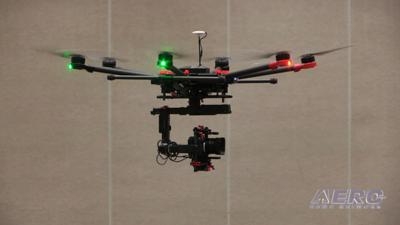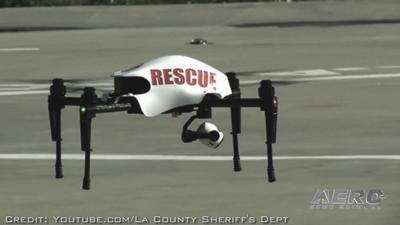Delivery Drones Will Comprise Less Than One Percent Of The Commercial Market By 2020
Production of drones for personal and commercial use is growing rapidly, with global market revenue expected to increase 34 percent to reach more than $6 billion in 2017 and grow to more than $11.2 billion by 2020, according to a new forecast from Gartner, Inc. Almost three million drones will be produced in 2017, 39 percent more than in 2016.

While the civil markets (personal and commercial) have been wading through regulation by various governments, drones' popularity in these markets has not diminished. The overall drone market will see substantial growth, but the dynamics of the personal and commercial submarkets are very different, Gartner analysts said.
Personal drones will continue to increase in popularity as an affordable extension of consumers' smartphones for taking photographs and selfies and for other entertainment options. They can fly a short distance and time, typically no more than 5,000 meters and for one hour, with flight height constrained to within 500 meters. They weigh less than 2 kilograms and are priced less than $5,000.
The market for commercial drones is much smaller, with a significantly higher average selling price in comparison with personal drones. With more countries solidifying their drone regulations, the market is beginning to stabilize, and companies are now buying drones to test and deploy in nearly every industry. Commercial drones normally have a higher payload, longer flight times, and redundant sensors and flight controllers to make them safer. They are more specialized to a function, such as mapping, delivery or industrial inspection, so prices vary according to these requirements.
"The commercial and personal drone markets are increasingly overlapping, as lower-priced personal devices are being used for commercial ventures," said Gerald Van Hoy, senior research analyst at Gartner. "Personal drone vendors are now aggressively trying to position themselves in the commercial market. Recent technological advances blur the lines, allowing personal drones to be used in many special-purpose applications such as surveillance, 3D mapping and modeling."
In commercial markets, new case studies are released regularly, showing savings in both costs and time, as well as highlighting increased accuracy and quality.

Agriculture was considered to be the first big commercial drone market, but pricing and economic dynamics around tighter yields and returns on investment mean that the commercial agricultural drone market is not growing at the pace of other commercial drone markets. Gartner predicts that through 2020, the high cost sensitivity of the agriculture market will limit drone adoption to 7 percent of commercial market growth.
Industrial inspections have been much more successful, primarily in oil and gas, energy, infrastructure and transportation. Regulations do not have as much of an impact on the market as was originally thought. Most inspections are close (within three meters) and low since they are examining equipment that is near or on the ground. Gartner expects the inspection segment to dominate with 30 percent of the commercial drone market through 2020.
Delivery drones continue to capture the attention of the news media but will not be a major factor for several years. The return on investment has not been proven either in regard to the cost of the drone, operational costs and a single customer delivery.
"Delivery drones will be mired in logistical issues like the time needed to return a drone to its origin point after delivery, and will amount to less than 1 percent of the commercial market by 2020," said Mr. Van Hoy. "We expect that delivery drones will begin finding a niche in business-to-business applications first, particularly for internal services within one company where logistics will not be such a big factor."
(Source: Gartner news release. Images from file)
 ANN's Daily Aero-Term (05.01.24): Say Altitude
ANN's Daily Aero-Term (05.01.24): Say Altitude ANN's Daily Aero-Linx (05.01.24)
ANN's Daily Aero-Linx (05.01.24) Classic Aero-TV: Korean War Hero Twice Reborn
Classic Aero-TV: Korean War Hero Twice Reborn Airborne 04.29.24: EAA B-25 Rides, Textron 2024, G700 Deliveries
Airborne 04.29.24: EAA B-25 Rides, Textron 2024, G700 Deliveries Airborne Affordable Flyers 05.02.24: Bobby Bailey, SPRG Report Cards, Skydive!
Airborne Affordable Flyers 05.02.24: Bobby Bailey, SPRG Report Cards, Skydive!




